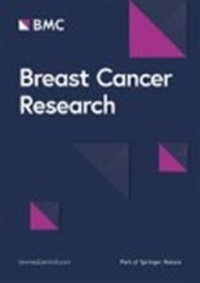临床相关基因特征为老年乳腺癌患者提供独立的预后信息
IF 5.6
1区 医学
Q1 ONCOLOGY
引用次数: 0
摘要
基因特征在老年乳腺癌患者中的临床应用仍不明确。我们的目的是确定这一患者亚群的特征预后能力。我们将基因组分级指数(GGI)、70-基因、复发评分(RS)、细胞周期评分(CCS)、PAM50 复发风险增殖(ROR-P)和 PAM50 签名的研究版本应用于 39 个乳腺癌数据集(N = 9583)。在筛选出年龄≥70岁、有雌激素受体(ER)和生存数据的患者后,剩下871名患者。使用 Kaplan-Meier 和多变量 Cox 比例危险(PH)建模法对所有患者(n = 871)、ER 阳性/淋巴结阳性(ER + /LN +,n = 335)和ER 阳性/淋巴结阴性(ER + /LN-,n = 374)患者的特征预后能力进行了检测。在对所有患者进行卡普兰-梅耶分析时,所有特征均具有统计学意义(Log-rank P < 0.001)。这种显著性在多变量分析中依然存在(Cox-PH,P ≤ 0.05)。在 ER + /LN + 患者中,除 PAM50 外,所有特征在 Kaplan-Meier 分析中均具有显著性(Log-rank P ≤ 0.05),在多变量分析中仍具有显著性(Cox-PH,P ≤ 0.05)。在ER + /LN-患者中,除RS外,其他基因在卡普兰-梅耶分析中均有显著性(Log-rank P≤0.05),但只有70基因、CCS、ROR-P和PAM50特征在多变量分析中仍有显著性(Cox-PH,P≤0.05)。我们发现,基因特征在所有、ER + /LN + 和 ER + /LN- 老年(≥ 70 岁)乳腺癌患者的生存分析中提供了预后信息,这表明基因特征在帮助老年患者做出治疗决定方面具有潜在的作用。本文章由计算机程序翻译,如有差异,请以英文原文为准。
Clinically relevant gene signatures provide independent prognostic information in older breast cancer patients
The clinical utility of gene signatures in older breast cancer patients remains unclear. We aimed to determine signature prognostic capacity in this patient subgroup. Research versions of the genomic grade index (GGI), 70-gene, recurrence score (RS), cell cycle score (CCS), PAM50 risk-of-recurrence proliferation (ROR-P), and PAM50 signatures were applied to 39 breast cancer datasets (N = 9583). After filtering on age ≥ 70 years, and the presence of estrogen receptor (ER) and survival data, 871 patients remained. Signature prognostic capacity was tested in all (n = 871), ER-positive/lymph node-positive (ER + /LN + , n = 335) and ER-positive/lymph node-negative (ER + /LN−, n = 374) patients using Kaplan–Meier and multivariable Cox-proportional hazard (PH) modelling. All signatures were statistically significant in Kaplan–Meier analysis of all patients (Log-rank P < 0.001). This significance remained in multivariable analysis (Cox-PH, P ≤ 0.05). In ER + /LN + patients all signatures except PAM50 were significant in Kaplan–Meier analysis (Log-rank P ≤ 0.05) and remained so in multivariable analysis (Cox-PH, P ≤ 0.05). In ER + /LN− patients all except RS were significant in Kaplan–Meier analysis (Log-rank P ≤ 0.05) but only the 70-gene, CCS, ROR-P, and PAM50 signatures remained so in multivariable analysis (Cox-PH, P ≤ 0.05). We found that gene signatures provide prognostic information in survival analyses of all, ER + /LN + and ER + /LN- older (≥ 70 years) breast cancer patients, suggesting a potential role in aiding treatment decisions in older patients.
求助全文
通过发布文献求助,成功后即可免费获取论文全文。
去求助
来源期刊

Breast Cancer Research
医学-肿瘤学
自引率
0.00%
发文量
76
期刊介绍:
Breast Cancer Research is an international, peer-reviewed online journal, publishing original research, reviews, editorials and reports. Open access research articles of exceptional interest are published in all areas of biology and medicine relevant to breast cancer, including normal mammary gland biology, with special emphasis on the genetic, biochemical, and cellular basis of breast cancer. In addition to basic research, the journal publishes preclinical, translational and clinical studies with a biological basis, including Phase I and Phase II trials.
 求助内容:
求助内容: 应助结果提醒方式:
应助结果提醒方式:


